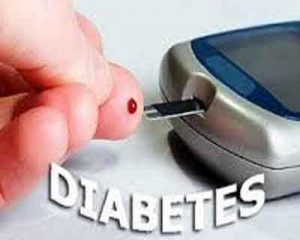- Home
- Editorial
- News
- Practice Guidelines
- Anesthesiology Guidelines
- Cancer Guidelines
- Cardiac Sciences Guidelines
- Critical Care Guidelines
- Dentistry Guidelines
- Dermatology Guidelines
- Diabetes and Endo Guidelines
- Diagnostics Guidelines
- ENT Guidelines
- Featured Practice Guidelines
- Gastroenterology Guidelines
- Geriatrics Guidelines
- Medicine Guidelines
- Nephrology Guidelines
- Neurosciences Guidelines
- Obs and Gynae Guidelines
- Ophthalmology Guidelines
- Orthopaedics Guidelines
- Paediatrics Guidelines
- Psychiatry Guidelines
- Pulmonology Guidelines
- Radiology Guidelines
- Surgery Guidelines
- Urology Guidelines
If HbA1c >10,combo of basal insulin and Liraglutide best bet : Study

Initiating treatment with basal insulin plus the glucagon-like peptide-1 (GLP-1) receptor agonist, liraglutide was best for an effective lowering of very high HbA1c in diabetes, is what the researchers have found out in a randomized study. In patients with very high HbA1c, this regimen was even better than one of basal plus bolus insulin found by the randomized SIMPLE study. These findings were presented at the American Diabetes Association (ADA) 2018 Scientific Sessions.
The Simple study was conducted to compare a GLP-1 plus basal insulin and metformin treatment regimen to a basal-bolus plus metformin treatment regimen in patients with very uncontrolled (HbA1c>10%) type 2 diabetes. The investigators compared the two regimens with respect to efficacy in improving glycemic control, the rate of hypoglycemia, change in weight, the effect on patient quality of life, treatment burden, physician time, as well as healthcare related cost.
In the study researchers randomized 120 adults with type 2 diabetes and HbA1c above 10% who were seen at their center. The patients had a mean age of 47 years and were mainly African American (42%) or Hispanic (40%), and less often non-Hispanic White (18%). In all about three quarters (71%) were women. The participants of the study were usually obese with a mean weight of 102 kg (approximately 225 Ibs) and mean body mass index of 37 kg/m2.On an average, the patients had had diabetes for 10.5 years and a high HbA1c of 12.1% and about three-quarters of the patients were already on insulin.
All patients continued to receive or were started on, metformin, which was titrated to 2000 mg/day or maximum tolerated dose (at least 1000 mg/day)and they continued on the same dose or were initiated on a dose of 0.3 units/kg of basal insulin detemir. Among liraglutide group patients received an initial dose of 0.6 mg/day, titrated to 1.8 mg/day or maximum tolerated dose (at least 1.2 mg/day).
The researchers found that mean HbA1c dropped from 11.8% to 8.8% in the basal-bolus insulin group and from 12.2% to 8.1% in the group that received basal insulin plus the GLP-1 receptor agonist, a significant difference of -1.1% (P = .03). Further, twice as many patients in the group that received basal insulin plus a GLP-1 receptor agonist reached the HbA1c target of 7% or lower, and roughly twice as many achieved an HbA1c of 8% or lower with no hypoglycemia or weight gain.
According to Marconi Abreu, MD, from the UT Southwestern Medical Center, Dallas, Texas who presented the findings of the study,"In summary, this is the first and only trial that compares two strategies suggested by the ADA for patients with HbA1c above 10%," he said. "It showed that a strategy based on [basal insulin plus a GLP-1 receptor agonist] was superior to a strategy of basal-bolus insulin, with an estimated treatment difference [in attained HbA1c] of -1.1%."
Importantly, he noted, more patients in the group that received basal insulin plus the GLP-1 receptor agonist achieved a target HbA1c below 7% at 6 months, and this group of patients also attained "a better weight profile, less hypoglycemia, and improvement in quality of life — all that with fewer insulin injections."

Disclaimer: This site is primarily intended for healthcare professionals. Any content/information on this website does not replace the advice of medical and/or health professionals and should not be construed as medical/diagnostic advice/endorsement or prescription. Use of this site is subject to our terms of use, privacy policy, advertisement policy. © 2020 Minerva Medical Treatment Pvt Ltd